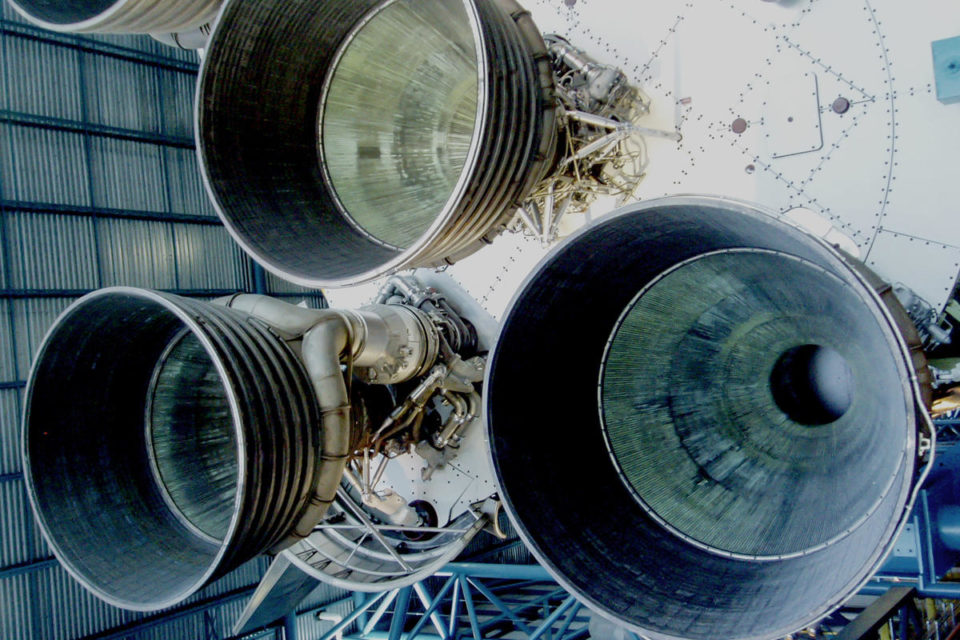Space Economy: 4 Trends to Watch in 2022

Story By Sean Ludwig, Emerging Digital Platforms, U.S. Chamber of Commerce
A booming space economy, aided by pioneer organizations like NASA and companies like Boeing, Rocket Lab, and many others, has begun to emerge, and business is booming.
One trillion dollars. That’s the economic potential of space commerce for businesses by 2040, according to estimates from investment bank Morgan Stanley.
Working together, private sector business leaders and government agencies have transformed what was once merely a dream of travel among the stars into a fully functioning global market — forming private aerospace companies, launching rockets and satellites, and even creating opportunities for space travel. In fact, this year there have been 64 commercial space flights, more than double the number in recent years, with everyone from famed actor William Shatner and NFL Hall of Famer Michael Strahan among those taking the trip.
To be sure, the growth in space exploration and the private aerospace business opens a host of economic possibilities, from new markets for businesses to job opportunities for people. “Space is a domain of commerce now, so much so that investors have committed nearly $31 billion over the past 10 years to make it so,” Charity Weeden, Vice President of Global Space Policy at Astroscale, said at the recent LAUNCH Space Summit 2021 from the U.S. Chamber of Commerce. “Those investors also include in some part the U.S. government, because it is understood that the economic strength and ingenuity of the United States space industry is one of our greatest jewels.”
From well-established players to business moguls building rockets to launch themselves into space to entrepreneurs creating companies to collect orbital debris and make space travel more sustainable, the space economy is poised for a growth trajectory similar to one of its rocket launches — straight up into the stratosphere. During the LAUNCH Space Summit, executives from companies like Boeing, Rocket Lab, and Space Tango, as well as officials from the U.S. Air Force and Federal Aviation Administration shared insights about the potential of space commerce for businesses. Here are four trends they identified that will shape the space economy in 2022.
Private investors are fueling growth
This year marks the biggest year on record for private equity and venture capital investment in space companies, with more than $10 billion invested in the industry through the third quarter, according to research firm Space Capital. Next year is likely to be even bigger, as investment funds look to provide capital to startups and early-stage space ventures in the hopes of a big return.
The more private capital there is to fuel space ventures, the faster companies can scale and new innovations can come to market, which in turn, will fuel further growth. Such investments helped Rocket Lab go public in August, according to CEO Peter Beck.
“If you think of the space industry, at least on the private side, it’s been played for a very long time with just enough capital to get things going … but not large amounts of capital to really reach its potential,” Beck said. “And I think this year has been really transformational for the industry because there’s a significant number of companies that have IPOed or raised private rounds of substantial capital. And that’s really going to help the industry to grow and start to execute the programs of ambition that have so long been dreamed about.”
Lisa Callahan, Vice President and General Manager of Commercial Civil Space at Lockheed Martin Space, echoed this sentiment. She notes the movement in the private sector will benefit science and research for Earth as well.
“The rapid growth that we’re seeing in this market is amazing,” said Callahan. “There’s a huge amount of new technology and innovation that’s flowing into the space sector [and it has] a huge amount of private and capital investment coming into the market. And this investment in my mind is not just going to benefit the science and exploration that we do in [low earth orbit] and beyond. But it’s also going to create innovations that can benefit us back here on Earth.”
Public agencies embrace commercial partnerships
One of the biggest trends we’ve seen in space-related activities in recent years and will continue well into 2022 is the rise of public-private partnerships versus governments doing things only for themselves. For example, the Cape Canaveral Space Force Station in Florida has grown tremendously as the top launch pad in the world for both public and private launches.
“Last year, we had more orbital launches than any single location on the planet,” Kelvin Manning, Deputy Center Director for the John F. Kennedy Space Center, said. Manning says a key factor in the decision to partner on private launch was “long-term sustainability and affordability” for NASA. “Our processing and launching infrastructure is available not only for the government but also for our commercial partners. That way, we distribute the costs among multiple users and reduce the costs for NASA.”
The public-private partnerships also can help avert threats, including protecting humans currently in space or going to space. Governments and companies are working together to better manage space traffic and contain orbital debris.
“It’s no longer just about machines — there are humans at risk here,” says Maj. Gen. DeAnna M. Burt, Deputy Commander of Space Operations Command, U.S. Space Force. “So, it is really important that we get traffic management right because it is dangerous for human life. I think to continue to grow we have to do as Charity mentioned earlier. This is a partnership with our international commercial partners here at the combined Space Operations Center. We work with our coalition partners and share information on both space traffic management and threats day in and day out.”
Additionally, the long-standing public-private partnership between NASA and Boeing has enabled considerable progress on the International Space Station and what space stations can look like in 2022 and beyond.
“Boeing has worked with NASA since the development phase and has helped design, deliver, integrate, and operate the nation’s largest orbital laboratory for NASA and its international partners,” Dr. Michelle Parker, Vice President and Deputy General Manager of Boeing Space and Launch, said. “Our success together has led us to 23 years of the ISS in orbit, with 21 of them having a consistent crew presence in space. … The lifecycle of NASA Space Station now represents a model of how future space stations will develop over time.”
Growth drives job creation, and not just for engineers and scientists
An important facet for the space economy is also the growth of jobs — and not just for rocket scientists. The number of jobs in the space economy is estimated to be somewhere around 400,000 today, but it is projected to rise to 1.5 million jobs or more in the future.
In fact, an entire labor ecosystem is needed for space commerce to meet its full economic potential. Included among the areas where workers are needed are accounting, marketing, design, I.T., and manufacturing, along with STEM jobs traditionally associated with space. The advanced manufacturing sector, for example, has seen a boost from launch services, says Steve Dickson, Administrator for the FAA.
“U.S. launch services rely on advanced manufacturing and were the source of 40% of all commercial launches, more than any other single country,” says Dickson. “So, this brings more than $2 billion a year in revenues to our manufacturing industries. And all this stuff is made in America.”
Moreover, the next generation will seek out new jobs related specifically to the space economy, says Marshall Smith, Senior Vice President of Space Systems at Nanoracks. And these workers won’t have worked in space or science beforehand either.
“This rapid growth is going to bring in a new, young, diverse generation into the space world instead of just … engineers,” Smith says. “You’re going to see a lot of diversity, [including] marketing, design, and manufacturing — enough to create a whole economy. It’s going to require everybody to see a massive change in the way we do business in space and on the ground.”
Licensing deals replace building and owning strategies
Recent policy decisions from public agencies have given rise to commercial opportunities for businesses. Among the biggest of these decisions has been the move by government agencies away from building and owning assets to licensing them from private companies. The move towards licensing materials and assets gives private businesses a foundation to build and scale.
“What the U.S. government specifically has been good at over the last decade or two is transitioning from building and owning their own space hardware to using the services of companies,” said Dr. Alain Berinstain, Chief Strategy Officer for Space Tango.
Berinstain cites transportation services for rockets and crew, lunar landers, and commercial space stations among the things government agencies are now licensing from private companies.
“Those kinds of policy decisions by the government really helps give rise to that economy [and] ecosystem. And then, with the government becoming a sort of anchor tenant for some of those services, it certainly does help support and kick off the possibility for companies like ours and other companies to take hold and to go and get their own customers that are not government customers.”


